Cookie-Jar Alarms: An Analysis of First-Grade Students’ Gendered Conceptions of Engineers following a Programming Design Task
Abstract
:1. Introduction
2. Literature Review
2.1. Nature of Engineering
2.2. Students’ Conceptions of Engineering
2.3. Effects of Engineering Curriculum
3. Methodology
3.1. Theoretical Framework
3.2. Participants
3.3. Curricular Intervention
3.4. Data Collection
3.5. Data Analysis
4. Results
4.1. Changing Gendered Conceptions of Engineers
4.2. Changing Conceptions of Engineering Work
4.3. Effectiveness of the Intervention
4.4. Interest and Engineering Identity
5. Discussion
6. Limitations and Future Research
7. Conclusions
Author Contributions
Funding
Institutional Review Board Statement
Informed Consent Statement
Data Availability Statement
Conflicts of Interest
Appendix A. Interview Protocol
- [Looking at the first drawing] What can you tell me about this drawing?
- What is the engineer doing?
- How did you know or learn that?
- [If the gender is not mentioned by pronouns, then ask: Is the engineer a boy or a girl?]
- [Looking at your second drawing] What can you tell me about this drawing?
- What is the engineer doing now?
- [If the gender is not mentioned by pronouns, then ask: Is the engineer a boy or a girl?]
- [Looking at your two drawings side-by-side] How are these drawings different?
- What made you change your mind about what engineers do?
- Do you think you are an engineer? Why, or why not?
References
- Moore, T.J.; Glancy, A.W.; Tank, K.M.; Kersten, J.A.; Smith, K.A.; Stohlmann, M.S. A framework for quality K-12 engineering education: Research and development. J. Pre-Coll. Eng. Educ. Res. J-PEER 2014, 4, 2. [Google Scholar] [CrossRef]
- Pleasants, J.; Olson, J.K. What is engineering? Elaborating the nature of engineering for K-12 education. Sci. Educ. 2019, 103, 145–166. [Google Scholar] [CrossRef] [Green Version]
- Moore, T.J.; Tank, K.M.; Glancy, A.W.; Kersten, J.A. NGSS and the landscape of engineering in K-12 state science standards. J. Res. Sci. Teach. 2015, 52, 296–318. [Google Scholar] [CrossRef]
- National Research Council (NRC). STEM Integration in K-12 Education: Status, Prospects, and an Agenda for Research; The National Academies Press: Washington, DC, USA, 2014. [Google Scholar] [CrossRef]
- Roehrig, G.H.; Moore, T.J.; Wang, H.-H.; Park, M.S. Is adding the E enough? Investigating the impact of K-12 engineering standards on the implementation of STEM integration. Sch. Sci. Math. 2012, 112, 31–44. [Google Scholar] [CrossRef]
- Ladson-Billings, G. Toward a theory of culturally relevant pedagogy. Am. Educ. Res. J. 1995, 32, 465–491. [Google Scholar] [CrossRef]
- National Science Foundation (NSF). Women, Minorities, and Persons with Disabilities in Science and Engineering: 2015; Special Report NSF 15-311; National Center for Science and Engineering Statistics: Arlington, VA, USA, 2015. Available online: http://www.nsf.gov/statistics/wmpd/ (accessed on 16 December 2021).
- Moote, J.; Archer, L.; DeWitt, J.; MacLeod, E. Comparing students’ engineering and science aspirations from age 10 to 16: Investigating the role of gender, ethnicity, cultural capital, and attitudinal factors. J. Eng. Educ. 2020, 109, 34–51. [Google Scholar] [CrossRef]
- Ozogul, G.; Miller, C.F.; Reisslein, M. Latinx and Caucasian elementary school children’s knowledge of and interest in engineering activities. J. Pre-Coll. Eng. Educ. Res. 2017, 7, 15–26. [Google Scholar] [CrossRef]
- Capobianco, B.M.; Diefes-Dux, H.A.; Mena, I.; Weller, J. What is an engineer? Implications of elementary school student conceptions for engineering education. J. Eng. Educ. 2011, 100, 304–328. [Google Scholar] [CrossRef]
- Weber, N.; Duncan, D.; Dyehouse, M.; Strobel, J.; Diefes-Dux, H.A. The development of a systematic coding system for elementary students’ drawings of engineers. J. Pre-Coll. Eng. Educ. Res. J-PEER 2011, 1, 6. [Google Scholar] [CrossRef] [Green Version]
- Fralick, B.; Kearn, J.; Thompson, S.; Lyons, J. How middle schoolers draw engineers and scientists. J. Sci. Educ. Technol. 2009, 18, 60–73. [Google Scholar] [CrossRef]
- Karatas, F.; Micklos, A.; Bodner, G. Sixth-grade students’ views of the nature of engineering and images of engineers. J. Sci. Educ. Technol. 2011, 20, 123–135. [Google Scholar] [CrossRef]
- Cejka, E.; Rogers, C.; Portsmore, M. Kindergarten robotics: Using robotics to motivate math, science, and engineering literacy in elementary school. Int. J. Eng. Educ. 2006, 22, 711–722. [Google Scholar]
- Pekmez, E. Primary school students’ views about science, technology and engineering. Educ. Res. Rev. 2018, 13, 81–91. [Google Scholar]
- Wendell, K.B.; Andrews, C.J.; Paugh, P. Supporting knowledge construction in elementary engineering design. Sci. Educ. 2019, 103, 952–978. [Google Scholar] [CrossRef]
- Cunningham, C.M.; Carlsen, W.S. Teaching engineering practices. J. Sci. Teach. Educ. 2014, 25, 197–210. [Google Scholar] [CrossRef]
- Cunningham, C.M.; Kelly, G.Y.J. Epistemic practices of engineering for education. Sci. Educ. 2017, 101, 486–505. [Google Scholar] [CrossRef]
- Knight, M.; Cunningham, C. Draw an Engineer Test (DAET): Development of a tool to investigate students’ ideas about engineers and engineering. In Proceedings of the 2004 American Society for Engineering Education Annual Conference & Exposition, Salt Lake City, UT, USA, 20–23 June 2004. [Google Scholar]
- Chambers, D. Stereotypic images of the scientist: The draw-a-scientist test. Sci. Educ. 1983, 67, 255–265. [Google Scholar] [CrossRef]
- Thomas, J.; Hawley, L.R.; DeVore-Wedding, B. Expanded understanding of student conceptions of engineers: Validation of the modified draw-an-engineer test (mDAET) scoring rubric. Sch. Sci. Math. 2020, 120, 391–401. [Google Scholar] [CrossRef]
- Hammack, R.; Utley, J.; Ivey, T.; High, K. Elementary teachers’ mental images of engineers at work. J. Pre-Coll. Eng. Educ. Res. 2020, 10, 3. [Google Scholar] [CrossRef]
- Capobianco, B.M.; French, B.; Diefes-Dux, H. Engineering identity development among pre-adolescent learners. J. Eng. Educ. 2012, 101, 698–716. [Google Scholar] [CrossRef]
- Capobianco, B.M.; Deemer, E.D.; Lin, C. Analyzing predictors of children’s formative engineering identity development. Int. J. Eng. Educ. 2017, 33, 44–54. [Google Scholar]
- Lachapelle, C.P.; Brennan, R.T. An instrument for examining elementary engineering student interests and attitudes. Int. J. Educ. Math. Sci. Technol. 2018, 6, 221–240. [Google Scholar] [CrossRef]
- Brophy, S.; Klein, S.; Portsmore, M.; Rogers, C. Advancing engineering education in P-12 classrooms. J. Eng. Educ. 2008, 97, 369. [Google Scholar] [CrossRef]
- Yoon, S.Y.; Dyehouse, M.; Lucietto, A.M.; Diefes-Dux, H.A.; Capobianco, B.M. The effects of integrated science, technology, and engineering education on elementary students’ knowledge and identity development. Sch. Sci. Math. 2011, 114, 380–391. [Google Scholar] [CrossRef]
- Capobianco, B.M.; Yu, J.H.; French, B.F. Effects of engineering design-based science on elementary school science students’ engineering identity development across gender and grade. Res. Sci. Educ. 2015, 45, 275–292. [Google Scholar] [CrossRef]
- Cunningham, C.M.; Lachapelle, C.P.; Brennan, R.T.; Kelly, G.J.; Tunis, C.S.A.; Gentry, C.A. The impact of engineering curriculum design principles on elementary students’ engineering and science learning. J. Res. Sci. Teach. 2020, 57, 423–453. [Google Scholar] [CrossRef]
- Kelly, G.J.; Cunningham, C.M. Epistemic tools in engineering design for K-12 education. Sci. Educ. 2019, 103, 1080–1111. [Google Scholar] [CrossRef]
- Hertel, J.D.; Cunningham, C.M.; Kelly, G.J. The roles of engineering notebooks in shaping elementary engineering student discourse and practice. Int. J. Sci. Educ. 2017, 39, 1194–1217. [Google Scholar] [CrossRef]
- Elkin, M.; Sullivan, A.; Bers, M.U. Programming with the KIBO robotics kit in preschool classrooms. Comput. Sch. 2016, 33, 169–186. [Google Scholar] [CrossRef]
- Sullivan, A.; Bers, M.U. Investigating the use of robotics to increase girls’ interest in engineering during early elementary school. Int. J. Technol. Des. Educ. 2019, 29, 1033–1051. [Google Scholar] [CrossRef]
- Capobianco, B.M.; Yu, J.H. Using the construct of care to frame engineering as a caring profession toward promoting young girls’ participation. J. Women Minorities Sci. Eng. 2014, 20, 21–33. [Google Scholar] [CrossRef]
- Gunckel, K.L.; Tolbert, S. The imperative to move toward a dimension of care in engineering education. J. Res. Sci. Teach. 2018, 55, 938–961. [Google Scholar] [CrossRef]
- Creswell, J.W.; Plano Clark, V.L.; Gutman, M.L.; Hanson, W.E. Advanced mixed methods research designs. In Handbook of Mixed Methods in Social and Behavioral Research; Tashakkori, A., Teddlie, C., Eds.; SAGE: Thousand Oaks, CA, USA, 2003; pp. 209–240. [Google Scholar] [CrossRef]
- Mertens, D.M. Transformative paradigm: Mixed methods and social justice. J. Mix. Methods Res. 2007, 1, 212–225. [Google Scholar] [CrossRef]
- Mertens, D.M. Transformative mixed methods: Addressing inequities. Am. Behav. Sci. 2012, 56, 802–813. [Google Scholar] [CrossRef] [Green Version]
- Sweetman, D.; Badiee, M.; Creswell, J.W. Use of the transformative framework in mixed methods studies. Qual. Inq. 2010, 16, 441–454. [Google Scholar] [CrossRef] [Green Version]
- Johnson, R.B.; McGowan, M.W.; Turner, L.A. Grounded theory in practice: Is it inherently a mixed method? Res. Sch. 2010, 17, 65–78. [Google Scholar]
- Creamer, E.G. Enlarging the conceptualization of mixed method approaches to grounded theory with intervention research. Am. Behav. Sci. 2018, 62, 919–934. [Google Scholar] [CrossRef]
- Guetterman, T.C.; Babchuk, W.A.; Howell Smith, M.C.; Stevens, J. Contemporary approaches to mixed methods–grounded theory research: A field-based analysis. J. Mix. Methods Res. 2019, 13, 179–195. [Google Scholar] [CrossRef]
- Stacey, J. Untangling feminist theory. In Introducing Women’s Studies; Richardson, D., Robinson, V., Eds.; Palgrave Macmillan: London, UK, 1993; pp. 44–73. [Google Scholar] [CrossRef]
- Beauvoir, S. The Second Sex; Vintage Books: New York, NY, USA, 1949. [Google Scholar]
- Hooks, B. Feminist Theory: From Margin to Center; South End Press: Boston, MA, USA, 1984. [Google Scholar]
- Hooks, B. Teaching to Transgress: Education as the Practice of Freedom; Routledge: New York, NY, USA, 1994. [Google Scholar]
- Butler, J.P. Gender Trouble: Feminism and the Subversion of Identity; Routledge: London, UK, 1990. [Google Scholar]
- Avraamidou, L. Science identity as a landscape of becoming: Rethinking recognition and emotions through an intersectionality lens. Cult. Stud. Sci. Educ. 2020, 15, 323–345. [Google Scholar] [CrossRef] [Green Version]
- Tisdell, E. Feminist epistemology. In The Sage Encyclopedia of Qualitative Research Methods; Given, L., Ed.; Sage Publications: Los Angeles, CA, USA, 2008; Volume 1, pp. 331–335. [Google Scholar]
- Brotman, J.S.; Moore, F.M. Girls and science: A review of four themes in the science education literature. J. Res. Sci. Teach. 2008, 45, 971–1002. [Google Scholar] [CrossRef]
- Mansfield, K.C.; Welton, A.D.; Grogan, M. “Truth or consequences”: A feminist critical policy analysis of the STEM crisis. Int. J. Qual. Stud. Educ. 2014, 27, 1155–1182. [Google Scholar] [CrossRef]
- Keller, E.F. Feminism and science. Signs J. Women Cult. Soc. 1982, 7, 589–602. [Google Scholar] [CrossRef]
- Haraway, D.J. Situated knowledges: The science question in feminism and the privilege of perspective. Fem. Stud. 1988, 14, 575–599. [Google Scholar] [CrossRef]
- Harding, S. Rethinking standpoint epistemology: What is “strong objectivity”? In Feminist Epistemologies; Alcoff, L., Potter, E., Eds.; Routledge: New York, NY, USA, 1993; pp. 49–82. [Google Scholar]
- Calabrese Barton, A.; Tan, E. Designing for rightful presence in STEM: The role of making present practices. J. Learn. Sci. 2019, 28, 616–658. [Google Scholar] [CrossRef]
- Lott, K.; Urbanek-Carney, S.; Mitchell, A. Cookie jar alarms: Early childhood engineering with robotics. Sci. Child. 2019, 57, 66–72. [Google Scholar] [CrossRef]
- Bers, M.U. Coding as another language: A pedagogical approach for teaching computer science in early childhood. J. Comput. Educ. 2019, 6, 499–528. [Google Scholar] [CrossRef]
- Kelley, T.R.; Sung, E. Sketching by design: Teaching sketching to young learners. Int. J. Technol. Des. Educ. 2017, 27, 363–386. [Google Scholar] [CrossRef]
- Peterman, K.; Daugherty, J.L.; Custer, R.L.; Ross, J.M. Analysing the integration of engineering in science lessons with the Engineering-Infused Lesson Rubric. Int. J. Sci. Educ. 2017, 39, 1913–1931. [Google Scholar] [CrossRef]
- Douglas, K.A.; Moore, T.J.; Johnston, A.C.; Merzdorf, H.E. Informed designers? Students’ reflections on their engineering design process. Int. J. Educ. Math. Sci. Technol. 2018, 6, 443–459. [Google Scholar] [CrossRef]
- Thomas, J.; Colston, N.M.; Ley, T.; DeVore-Wedding, B.; Hawley, L.R.; Utley, J.; Ivey, T. Fundamental research: Developing a rubric to assess children’s drawings of an engineer at work. In Proceedings of the ASEE Annual Conference and Exposition, New Orleans, LA, USA, 26 June–28 August 2016. [Google Scholar] [CrossRef] [Green Version]
- Archer, L.; Dewitt, J.; Osborne, J.; Dillon, J.; Willis, B.; Wong, B. “Balancing acts’’: Elementary school girls’ negotiations of femininity, achievement, and science. Sci. Educ. 2012, 96, 967–989. [Google Scholar] [CrossRef]
- Ing, M.; Aschbacher, P.R.; Tsai, S.M. Gender differences in the consistency of middle school students’ interest in engineering and science careers. J. Pre-Coll. Eng. Educ. Res. J-PEER 2014, 4, 2. [Google Scholar] [CrossRef]
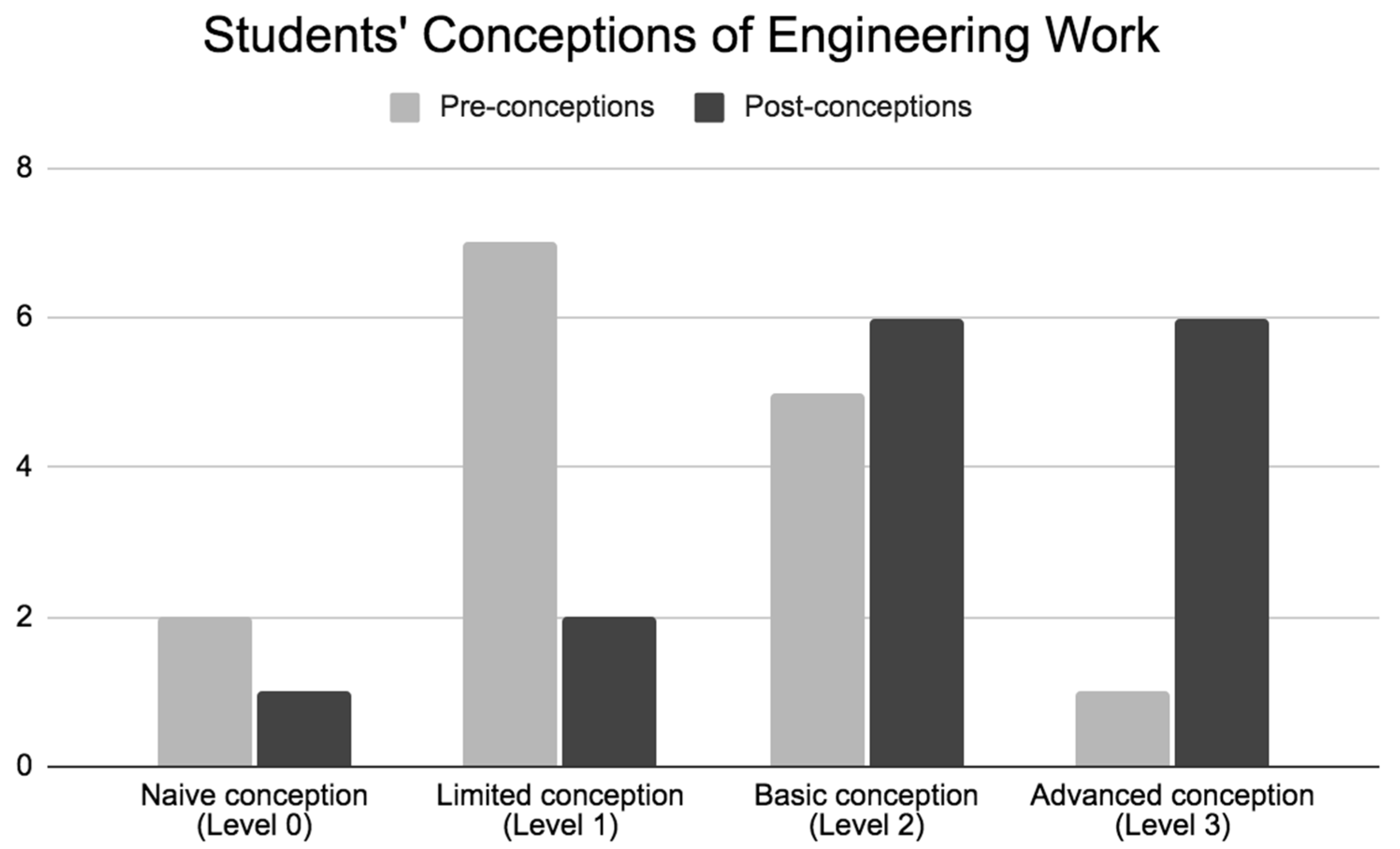
| Preconceptions | Post-Conceptions | ||||||
|---|---|---|---|---|---|---|---|
| Male n = 7 | Female n = 8 | Total n = 15 | Male n = 7 | Female n = 8 | Total n = 15 | Pre/Post Comparison n = 15 | |
| Engineers Are Male | 7 (100%) | 3 (38%) | 10 (67%) | 7 (100%) | 0 (0%) | 7 (47%) | p = 0.462 |
| Engineers Use Technology (Robots) | 0 (0%) | 5 (33%) | 5 (33%) | 2 (13%) | 6 (40%) | 8 (53%) | p = 0.462 |
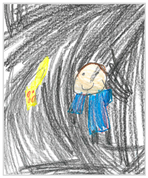 |  | 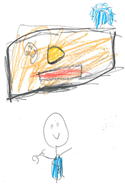 | 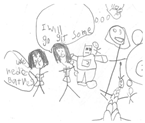 |
| Girl 3 | Girl 6 | ||
| Pre-drawing: “My dad is building a rocket.” Post-drawing: “They’re building a robot.” Why the change: “Because there’s a lot of kinds of engineers.” | Pre-drawing: “That is the car that he’s fixing.” Post-drawing: “There’s two engineer partners…and they work together. They’re building a robot and their mom’s saying, “No, stop! You’re making a mess!” Why the change: “Because I wanted to kind of take turns.” | ||
 |  |  |  |
| Girl 8 | Boy 1 | ||
| Pre-drawing: “I drawed a robot that they were building.” Post-drawing: “I’m testing it…You just twist something and then candy falls out.” Why the change: “It’s really interesting how it works.” | Pre-drawing: “He’s fixing a car.” Post-drawing: “He’s fixing a robot.” Why the change: “I thought he would be working on a bigger thing, and he would be working on not a smaller thing.” | ||
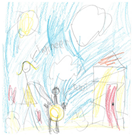 | 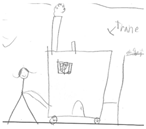 |  | 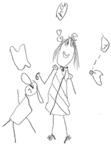 |
| Girl 2 | Girl 11 | ||
| Pre-drawing: “That’s a real engineer…making a robot.” | Pre-drawing: “She’s helping make the train go.” | ||
| Post-drawing: “That was me when I was a little girl, I want to be an engineer when I grows up.” | Post-drawing: “She’s helping robots…like when they need more batteries and stuff.” | ||
| Why the change: “An engineer fixes things and if it doesn’t work, she will try it again.” | Why the change: “Because I learned…engineers, like, make stuff.” | ||
 |  |  | 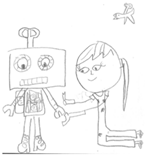 |
| Girl 12 | Girl 15 | ||
| Pre-drawing: “She’s fixing a robot, and her hair’s kind of going out crazy because she’s doing crazy things…I’ve been watching some movies that had…robots.” | Pre-drawing: “An engineer…fixes things and wants to make something new that no…other people, ever did…This is adult.” | ||
| Post-drawing: “My engineer is fixing a robot. They can fix anything.” | Post-drawing: “This is the child making her own robot.” | ||
| Why the change: “[I learned] that engineers make alarming systems…and if someone feels the something then it goes off, like a fire alarm.” | Why the change: “Because they can make something too…and when they grow up, they can make more stuff out of their imagination.” | ||
| Interview Survey Question n = 15 | Significance Level | |||
|---|---|---|---|---|
| Engineering Identity X Gender | Male 1 of 7 (14%) | Female 6 of 8 (75%) | Total 7 of 15 (47%) | p = 0.041 * |
| Engineering Identity X Knowledge of Engineering | rs = 0.56 | p = 0.030 * | ||
Publisher’s Note: MDPI stays neutral with regard to jurisdictional claims in published maps and institutional affiliations. |
© 2022 by the authors. Licensee MDPI, Basel, Switzerland. This article is an open access article distributed under the terms and conditions of the Creative Commons Attribution (CC BY) license (https://creativecommons.org/licenses/by/4.0/).
Share and Cite
Mitchell, A.; Lott, K.H.; Tofel-Grehl, C. Cookie-Jar Alarms: An Analysis of First-Grade Students’ Gendered Conceptions of Engineers following a Programming Design Task. Educ. Sci. 2022, 12, 110. https://doi.org/10.3390/educsci12020110
Mitchell A, Lott KH, Tofel-Grehl C. Cookie-Jar Alarms: An Analysis of First-Grade Students’ Gendered Conceptions of Engineers following a Programming Design Task. Education Sciences. 2022; 12(2):110. https://doi.org/10.3390/educsci12020110
Chicago/Turabian StyleMitchell, April, Kimberly H. Lott, and Colby Tofel-Grehl. 2022. "Cookie-Jar Alarms: An Analysis of First-Grade Students’ Gendered Conceptions of Engineers following a Programming Design Task" Education Sciences 12, no. 2: 110. https://doi.org/10.3390/educsci12020110
APA StyleMitchell, A., Lott, K. H., & Tofel-Grehl, C. (2022). Cookie-Jar Alarms: An Analysis of First-Grade Students’ Gendered Conceptions of Engineers following a Programming Design Task. Education Sciences, 12(2), 110. https://doi.org/10.3390/educsci12020110







